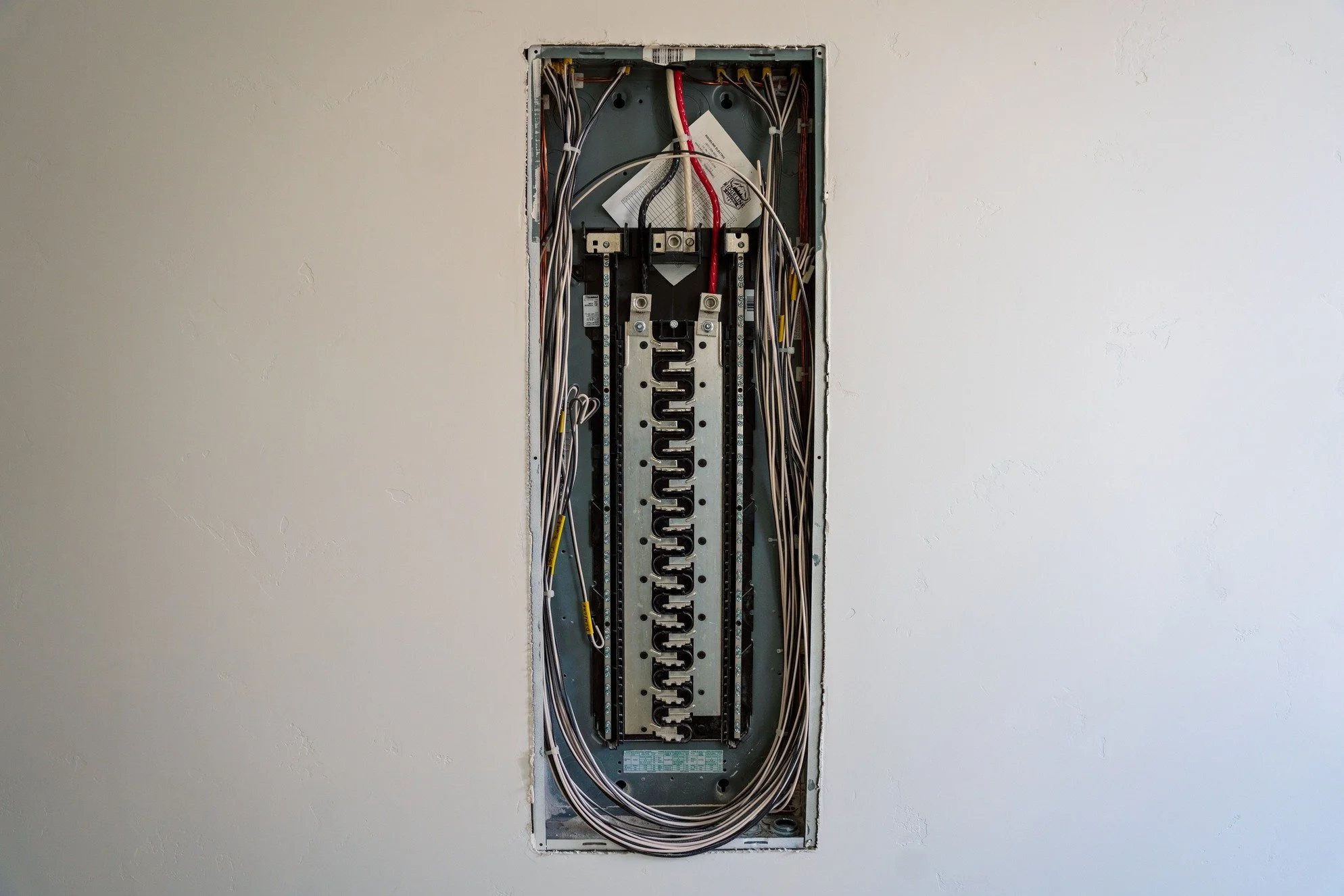Fresh Wires for Fresh Walls
Professionals work from the studs outward, installing wiring that plays nicely with everything from smart thermostats to high-efficiency appliances.
Fresh drywall may draw the eye, but what’s behind it matters just as much. Newly renovated spaces need electrical systems that match their beauty—silent, safe, and ready for the future. New home electrical wiring isn’t just about lights that turn on; it’s about performance, protection, and planning for whatever technology tomorrow brings.
Professionals work from the studs outward, installing wiring that plays nicely with everything from smart thermostats to high-efficiency appliances. No shortcuts. No backtracking. Just seamless circuits built for modern life.
Old Wiring Doesn’t Belong in a Fresh Build
Some homeowners believe that old wiring can be left in place when the walls come down. That’s like putting antique plumbing behind a brand-new tile shower—impressive in theory, risky in practice. Old wires weren’t designed to handle the demands of today’s lifestyle. Multiple TVs, laptop chargers, espresso machines, and electric vehicle chargers weren’t part of the plan back in the 1970s.
Professionals remove aging cables and replace them with new copper conductors that meet current electrical code and capacity. Every outlet, switch, and fixture starts with a clean slate—no brittle insulation, no mystery junctions, no leftover surprises.
Circuits That Match How People Live Today
A single outlet in the corner won’t cut it for most rooms anymore. People plug in constantly, and not just phones and lamps. Home offices need multiple device connections. Kitchens need power-hungry appliances. Garages might need to support a freezer, a treadmill, and an EV charger all at once.
Electricians design new home electrical wiring with lifestyle in mind. Circuits are strategically split, outlets are placed where people actually use them, and each space supports both current needs and future upgrades. No more extension cords crisscrossing the floor like an obstacle course.
Lighting Plans That Brighten More Than the Room
A well-lit home does more than help people see where they’re walking. It shapes mood, defines function, and adds value. But lights can only shine bright if the wiring behind them is smartly installed.
Professionals work with lighting plans that take into account room size, usage, and personal preferences. They wire for ambient lighting, task lighting, accent lights, and even hidden LED strips if that’s the vibe. And they make sure every dimmer, smart switch, and remote control works without lag or flicker.
Dedicated Circuits Are The Heroes
New builds are the perfect opportunity to introduce dedicated circuits for high-demand appliances, such as ovens, dryers, tankless water heaters, and home theaters. These appliances draw more power than a general-use circuit can safely support.
Professionals select the correct gauge wire, calculate the amperage requirements, and install each circuit with precision. Dedicated lines prevent flickering lights, tripped breakers, and mid-spin laundry meltdowns. The correct wiring up front means fewer problems later, and no need to unplug the fridge to run the blender.
No One Wants to Cut Into Fresh Drywall Later
Wiring mistakes made early turn into expensive repairs later. Missing an outlet, overloading a circuit, or skipping conduit where it’s required can result in cutting into pristine walls down the line.
Electricians who specialize in new home electrical wiring avoid that heartbreak. They run full system checks before drywall ever goes up, verify every outlet box and switch location, and label everything with a logic that makes future upgrades straightforward instead of stressful.
Smart Home Integration Starts With Smart Wiring
Smart lighting, security systems, smart thermostats, and doorbell cameras all sound futuristic until they malfunction due to poor wiring. Many of these systems require a solid backbone of low-voltage wiring, grounded circuits, and strong Wi-Fi support.
Professionals install new home wiring with smart tech in mind. They pull CAT6 cables where needed, wire structured media panels, and make sure every device has a dependable connection. That means no buffering, no ghost resets, and no guessing whether the living room lights will respond to voice commands.
Garage Wiring Deserves Just As Much Love
Garages aren’t just for parking anymore. They’re workshops, gyms, storage centers, and sometimes even offices. Leaving them with a single overhead light and one outlet by the door is a missed opportunity.
Professionals outfit garages with proper lighting, multiple circuits, and weather-rated outlets for tools and chargers. They run conduit along finished walls and ceiling beams, providing the space with flexibility without compromising safety. Whether it’s a woodworking hobby or a full-blown home gym, the garage works because the wiring does.
Code Compliance Isn’t Optional—It’s the Starting Point
Electrical code exists for good reason. It sets the baseline for safety, performance, and longevity. New home wiring must meet this standard and ideally exceed it.
Licensed electricians stay updated on local and national code changes. They install arc fault protection where required, place GFCIs in all the right wet zones, and make sure grounding is solid throughout the structure. They don’t wing it or make assumptions—they build with intention, following code like it’s a blueprint for sanity.
Exterior Power Requires Special Consideration
Outdoor spaces also benefit from power. String lights, irrigation timers, speakers, and even powered pergolas all depend on wiring that can survive weather, pests, and UV exposure.
Professionals run exterior circuits in conduit, seal every connection, and install weatherproof outlet covers. They include GFCI protection and often tie outdoor lighting into interior switch panels for easy access. So when it’s time for a backyard barbecue or a late-night unwind under the stars, everything works as it should—no tangled cords or surprise shorts.
Wiring for the Future Starts Today
Technology advances rapidly, and homes built today will likely undergo multiple technological cycles over the next few decades. Wiring that only addresses current needs will quickly feel outdated.
Electricians who handle new home electrical wiring future-proof systems where possible. They include extra conduit runs to allow for future cable pulls. They install deeper boxes for upgraded devices. They wire panels with room for additional breakers. The home grows gracefully over time because it was built with flexibility baked in.
Low-Voltage Systems Are More Important Than Ever
From internet and television to alarm systems and intercoms, low-voltage wiring is the nervous system of the home. It deserves the same planning and professionalism as the high-voltage stuff.
Professionals handle both simultaneously, pulling data lines alongside power lines with proper separation, shielding, and routing. They also centralize controls in structured panels, reducing clutter and confusion. The result is a home that’s tech-ready without being tangled in cords.
Panel Placement Affects Everything
Where the electrical panel is located matters more than most people realize, as it affects accessibility, wire routing, heat buildup, and even resale value. A poorly placed panel can be hard to reach and expensive to upgrade.
Electricians carefully select panel locations—typically in utility rooms, garages, or dedicated closets — with adequate clearance and ventilation. They also mount panels at the correct height and label everything clearly. The future electrician who works on the home will thank them—and so will the homeowner during an outage.
Grounding Is The Unsung Safety Feature
Proper grounding ensures the safety of people and appliances. It prevents static shocks, equipment damage, and even fires in the case of a fault. It’s easy to overlook, but absolutely vital.
New home electrical wiring includes grounding every outlet, bonding water and gas pipes where required, and connecting to dedicated ground rods with tested resistance. Professionals measure everything twice, confirm continuity, and never treat grounding like an afterthought.
The Inspection Process Isn’t Just Red Tape
Before walls close up, every new electrical system must pass inspection. It’s not just bureaucracy—it’s protection. A passed inspection means the home’s wiring is safe, compliant, and ready for daily life.
Electricians prepare for inspections by doing things right the first time. They follow spacing rules, support cables properly, and leave boxes accessible. When the inspector walks through, there’s nothing to hide—just clean, code-compliant work built to last.
When the Walls Are Fresh, the Wires Should Be Too
A beautiful renovation deserves more than a cosmetic makeover. The bones of the house—the electrical system included—should match the surface in quality and care. New home electrical wiring sets the stage for decades of comfort, convenience, and connection.
Electricians make it happen one outlet, one circuit, and one careful inspection at a time. No shortcuts. No guesswork. Just systems that perform quietly, reliably, and in perfect sync with the walls around them.

